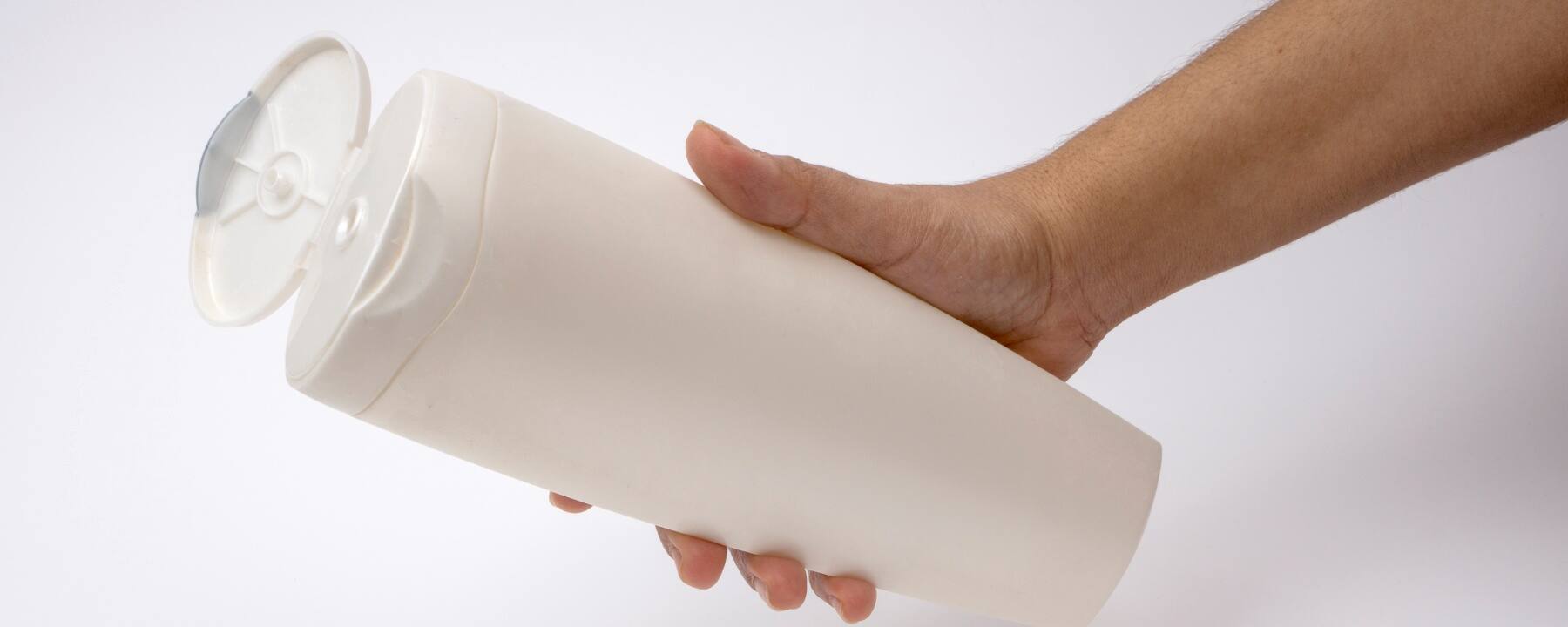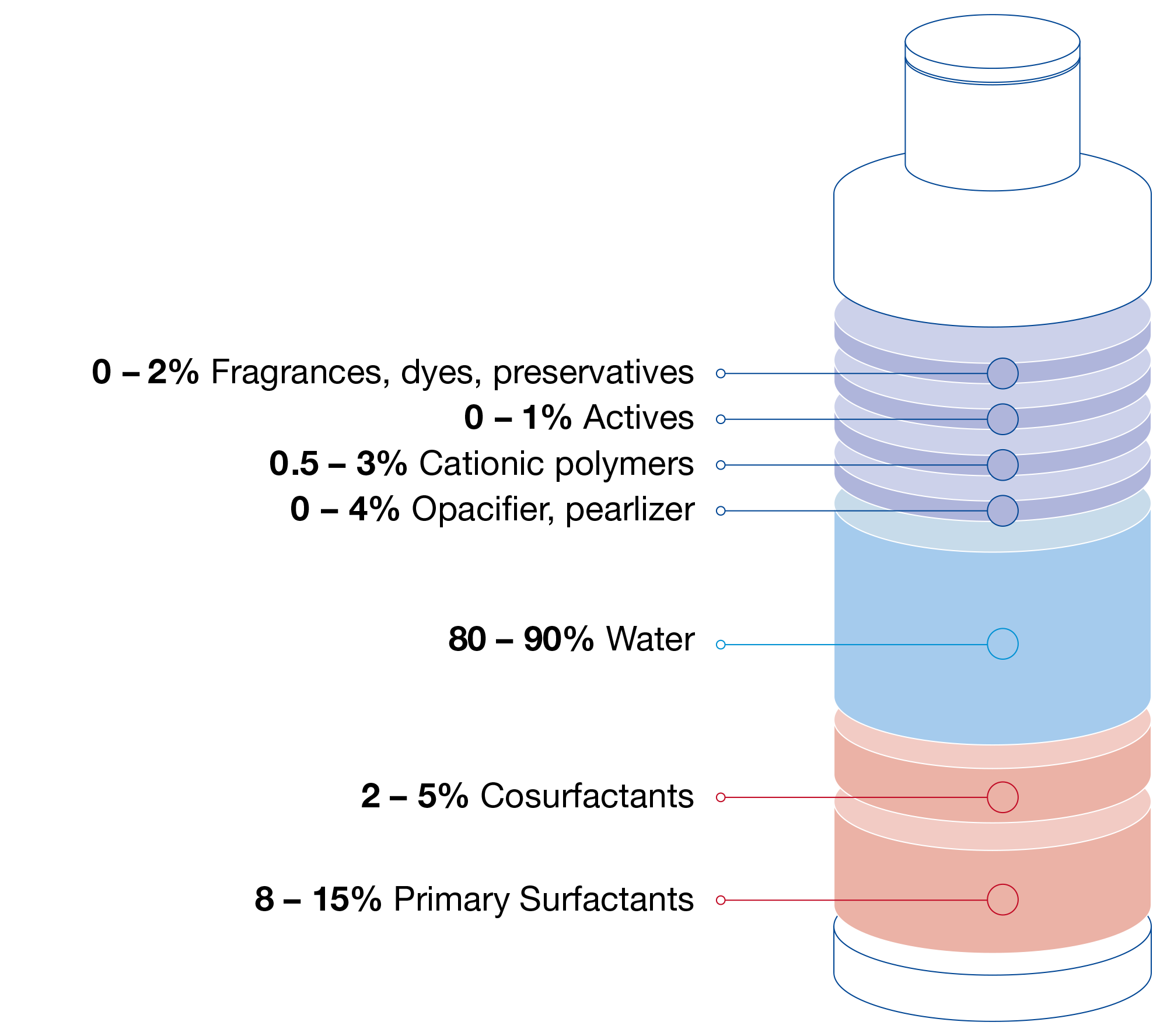
The world of sulfates
Shampoo: What's in it?
Water and soap are not the solution for clean hair and perfect looks, to most people. The wide range of shampoos on the market, with different compositions and combinations of ingredients, is indeed the solution.
In our special issue, we will look into sulfates and surfactants, key ingredients in shampoo and other cosmetic products. Since they give rise to heated discussions about safety, skin compatibility and health risks, it is important for us to say one thing right at the start.
It applies to all shampoos and all other freely available cosmetic products: These products are considered safe if the instructions for use are followed.
In the EU, a safety assessment is carried out on all cosmetic products, including shampoos and sulfate surfactants. The use of various ingredients, such as preservatives, is heavily regulated, and some substances are prohibited (1,328 substances were prohibited at the end of 2022). You don't have to worry about safety. It’s taken care of.
Consumers want to know what they consume
Transparency is another point that builds trust among consumers. Everyone wants to know what they are consuming. How do I know what's in it? In principle, it's very similar to food in a supermarket. We find a list of ingredients on the package that presents the contents of the product in writing. Cosmetic ingredients are declared using their INCI names (International Nomenclature of Cosmetic Ingredients).
The INCI information is particularly helpful for allergy sufferers, such as those with skin contact allergies and/or people with very sensitive and delicate skin. If you know the substances to which you have an intolerance, you can quickly identify them using the INCI name and then switch to another product of your choice.
INCI
The use of INCI names is an international agreement to enable the precise labeling of ingredients in cosmetic products.
The sequence of listing the ingredients is determined by their proportion by weight, i.e. everything ≥ 1% is listed in decreasing order. Ingredients representing less than 1% may be listed in any sequence after those with a concentration of 1% or more.
The INCI names can be found directly on the packaging under "Ingredients/Contents". The ingredients' names must be printed indelibly, be easily legible and clearly visible. If the packaging is too small for this, an “instructions for use” leaflet must be enclosed.
After decades of development and research and ever-changing consumer needs, it is no longer possible to describe “the” composition of a shampoo. There are now so many different products that we will only present a rough outline here. Please bear in mind: the individuality of the products has no negative effects on product safety or consumer safety.
Keeping an eye on the needs of consumers
We could compare a shampoo, with its different components, to a good cocktail. Not in a negative sense, not the way people talk about “chemical cocktails” with suspected harmful effects. To avoid misunderstandings, we prefer to talk about compositions. This also applies to our other article – The dose makes the poison – that clears up myths and false, misleading claims.
What has never changed is the actual goal of a shampoo. It should clean the hair and remove dirt, grease and skin flakes. What has come on top in recent years is that consumers now demand feel-good products that deliver a pleasant sensory experience during application, along with nourishing properties. Sustainability and environmental friendliness are also becoming increasingly important. The requirements on cosmetic products have steadily increased. Just cleaning the hair is no longer enough.
Other requirements include:
- Delivering on the performance profile: Doing what the shampoo promises
- Good skin compatibility
- Appealing texture and appearance
- Optimal sensory properties
- Integrating various functional ingredients into a stable formulation
- Respecting the environment
- Pleasant scent
The right composition of ingredients is necessary to respond to different consumers’ wishes and needs. Scent, for example, is very important for children’s shampoos. A product has to smell good to be accepted by the little ones.
Research and science have created a high level of knowledge about skin and hair. If you take a closer look at the current range of cosmetic rinse-off products and shampoos in particular, you can see that manufacturers and developers are responding to the wishes and needs of consumers.
In the past there was only a small range of shampoos, and they foamed and cleaned. Today, there are numerous products that address different needs relating to the hair and scalp. This list on the right side contains just a few examples and areas of application, and is intended to give an idea of the broad range of products available.
You can now find:
- Anti-dandruff shampoo
- Shampoo for oily hair
- Gentle shampoo for dry scalps
- Special shampoo for curly hair
- Kids shampoo
- Shampoo for colored hair
Inside the bottle
In a hair shampoo, 10–30 different ingredients are usually used to help the product perform as desired. It is not only the depth or intensity of the required cleaning that must be taken into account in the composition. The appearance, smell and feel of the product also play a key role. Tastes are different and manufacturers respond in the form of completely different compositions. What are the most important components?
- Water: Liquid product
Even though we said at the start that water alone is not enough, it is the prime ingredient in a liquid shampoo in terms of quantity. All the other ingredients are dissolved in it.
- Surfactants: Cleaning + foaming
Next in volume after water: surfactants. These active washing substances are an essential ingredient in shampoo. Their focus is on cleansing and foaming. The two sulfate surfactants SLS and SLES deserve a special mention here. Sodium lauryl sulfate and sodium lauryl ether sulfate are often used surfactants in personal care products.
They have proven their value for decades, they are safe and extremely powerful. Foam is very important to most consumers because it a) feels nice and b) gives the impression that the shampoo is really cleaning. This perception is strong, even though foam is not really needed clean hair and scalp. Think of a makeup remover. It cleans but it does not foam.
- Thickening agents: The right texture and viscosity
Thickening agents (also called rheology modifiers) adjust the viscosity of the final product. It is what you feel when you pour your hair care product out of the bottle. A thin, watery product can easily run off between the fingers, making it possible that most of the product will never even reach the scalp or hair.
- Conditioners, care products and actives: Product promises and care
In addition to cleaning the hair, the shampoo should provide a few pleasant “side effects” that consumers see as benefits and manufacturers use for advertising. For example, many shampoos contain a conditioner. Hair should be easy to comb after washing. The use of lipids allows the hair to regenerate and feel pleasant again. Other ingredients may include proteins that strengthen the hair and repair it if necessary.
Other components that are used include:
- Preservatives for microbiological stability
- Sensory amplifiers like fragrances and colors that affect the sensory experience
Overall, a shampoo is much more than just soap and water which were used to clean hair more than 100 years ago. Sulfate surfactants play an extremely important role in this development. Their performance is impressive and with the correct formulation they deliver a high level of consumer satisfaction and safety. There's no need for a bad hair day. Not in today’s world.
Try out different products and find the right shampoo for you. The range is wide, with or without sulfates. Enjoy looking after your hair, no matter what.
Lipids
A general term for oil-loving substances. Lipids in hair care products help the treated hair feel less dry. In other words, combating “dry” hair has nothing to do with water – it all depends on the lipids. More about "dry" hair here.

